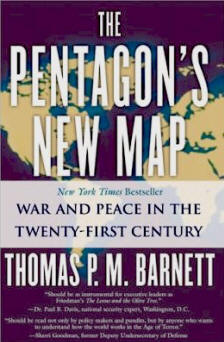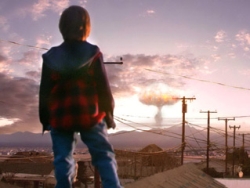Entries in Popular Culture (53)
The Devil you know
Sports teams, schools, hospitals wrestle with global MRSA epidemic
 MRSA has claimed yet another young life. Seventeen year-old Ashton Bonds of Lynch Station, Virginia, died following a bout with the disease. MRSA is the acronym for Methicillin-resistant Staphylococcus aureus, a particularly nasty bacteria that is showing up all over the nation. In Mr. Bonds' case, MRSA had spread via his bloodstream, attacking his kidneys, liver, lungs and heart muscle.
MRSA has claimed yet another young life. Seventeen year-old Ashton Bonds of Lynch Station, Virginia, died following a bout with the disease. MRSA is the acronym for Methicillin-resistant Staphylococcus aureus, a particularly nasty bacteria that is showing up all over the nation. In Mr. Bonds' case, MRSA had spread via his bloodstream, attacking his kidneys, liver, lungs and heart muscle.
MRSA apparently began its life in hospitals. The probable cause grew from lax oversight of hospital infectious disease control protocols.
From a Bloomberg news story of December 19, 2005: http://www.bloomberg.com/apps/news?pid=10000103&sid=aQGnyaFWj2FA&refer=us :
Researchers are concerned especially about antibiotic resistant bacterial infections that arise in hospitals and spread to homes and crowded workplaces. The microbe, called methicillin-resistant staphylococcus aureus, or MRSA, is creating a health hazard in the U.S. dwarfing the threat posed by the H5N1 avian flu, said Steve Projan, vice president of protein technologies for Wyeth, the drugmaker that markets the Tygacil antibiotic.
``This is a hyper-virulent virulent bug,'' Projan said in a press conference at the Interscience Conference on Antimicrobial Therapy and Antibiotics on Friday. ``While we're very concerned about H5N1, we do have in front of us today this outbreak of community-acquired MRSA.'' (bold mine)
Increasingly, researchers are finding these drug-resistant infections outside the hospital, leading to concerns about widespread outbreaks of hard-to-treat microbes.
In some hospitals in San Francisco and Los Angeles, the new toxic strain is the leading cause of drug-resistant staph infections. More than half the MRSA's at the Harbor-UCLA Medical Center are the community-acquired strain, according to a study presented Dec. 17 by Cynthia Maree, an infectious disease specialist at the University of California, Los Angeles Geffen School of Medicine.
``That's more than twice the rate we had in 1999,'' she said in an interview at the conference. ``When patients make repeat trips to the hospital with the same strain, health workers will sometimes clean the patient's home,'' in an attempt to get rid of the source of infection, she said.
MRSA has become a major pain in the rear for school districts. It has hit sports teams especially hard -- especially those sports with a great deal of abrasion on hard surfaces, where the bacteria can transfer from skin to skin. As a result, athletic coaches and trainers are learning about MRSA in clinics and lectures at coaches conventions. Today, for example, wrestling coaches in several states are required to disinfect all wrestling mats after practice and before and in some cases, even during wrestling matches.
But the disease is certainly not limited to high school athletics. In 2003, the St. Louis Rams had to disinfect their playing surface and their practice fields, following the revelation that opposing teams were contracting MRSA after playing the Rams in their domed stadium. In fact, the New England Journal of Medicine published a scientific paper on the outbreak, submitted by researchers from (among other entities) the National Center for Infectious Diseases and the Epidemic Intelligence Service, Division of Applied Public Health Training, Centers for Disease Control and Prevention. The abstract is located at: http://content.nejm.org/cgi/content/abstract/352/5/468 . It says, in part:
We conducted a retrospective cohort study and nasal-swab survey of 84 St. Louis Rams football players and staff members. S. aureus recovered from wound, nasal, and environmental cultures was analyzed by means of pulsed-field gel electrophoresis (PFGE) and typing for resistance and toxin genes. MRSA from the team was compared with other community isolates and hospital isolates.
During the 2003 football season, eight MRSA infections occurred among 5 of the 58 Rams players (9 percent); all of the infections developed at turf-abrasion sites. MRSA infection was significantly associated with the lineman or linebacker position and a higher body-mass index. No MRSA was found in nasal or environmental samples; however, methicillin-susceptible S. aureus was recovered from whirlpools and taping gel and from 35 of the 84 nasal swabs from players and staff members (42 percent). MRSA from a competing football team and from other community clusters and sporadic cases had PFGE patterns that were indistinguishable from those of the Rams' MRSA; all carried the gene for Panton–Valentine leukocidin and the gene complex for staphylococcal-cassette-chromosome mec type IVa resistance (clone USA300-0114). (bold mine)
From the Bloomberg story of 2005:
Episodes of drug-resistant infections have occurred in the past year on professional U.S. football teams, including the St. Louis Rams, Baltimore Ravens, and San Francisco 49ers, said Dan Jernigan, chief of CDC's epidemiology branch at the National Center for Infectious Diseases. Infections have been seen among newborns in nurseries, he said.
In an article in today's Washington Post, reporter Rob Stein gives some unbelievable new factoids. http://www.washingtonpost.com/wp-dyn/content/article/2007/10/16/AR2007101601392.html?hpid=topnews
A dangerous germ that has been spreading around the country causes more life-threatening infections than public health authorities had thought and is killing more people in the United States each year than the AIDS virus, federal health officials reported yesterday.
The microbe, a strain of a once innocuous staph bacterium that has become invulnerable to first-line antibiotics, is responsible for more than 94,000 serious infections and nearly 19,000 deaths each year, the Centers for Disease Control and Prevention calculated.
MRSA is a strain of the ubiquitous bacterium that usually causes staph infections that are easily treated with common, or first-line, antibiotics in the penicillin family, such as methicillin and amoxicillin. Resistant strains of the organism, however, have been increasingly turning up in hospitals and in small outbreaks outside of heath-care settings, such as among athletes, prison inmates and children.
The CDC's Scott K. Fridkin discloses the results of a multi-state study of MRSA. It yielded the following information:
In the new study, Fridkin and his colleagues analyzed data collected in California, Colorado, Connecticut, Georgia, Maryland, Minnesota, New York, Oregon and Tennessee, identifying 5,287 cases of invasive MRSA infection and 988 deaths in 2005. The researchers calculated that MRSA was striking 31.8 out of every 100,000 Americans, which translates to 94,360 cases and 18,650 deaths nationwide. In comparison, complications from the AIDS virus killed about 12,500 Americans in 2005.
"This indicates these life-threatening MRSA infections are much more common than we had thought," Fridkin said.
In fact, the estimate makes MRSA much more common than flesh-eating strep infections, bacterial pneumonia and meningitis combined, Bancroft noted.
"These are some of the most dreaded invasive bacterial diseases out there," she said. "This is clearly a very big deal."
The infection is most common among African Americans and the elderly, but also commonly strikes very young children.
So there are more deaths from MRSA in the United States that there are from HIV/AIDS, a recognized pandemic. And perhaps MRSA is a candidate for true pandemic status, based on this snippet, also from the Bloomberg article of 2005:
The Netherlands has taken a ``search and destroy'' approach to drug-resistant superbugs, said Vincent Jarlier, an infection control officer for the Assistance Publique hospital network in France. Dutch doctors and nurses who test positive for the superbugs must have six negative tests before they can return to work, he said. Hospitals are required to shut down wards where the superbugs are detected; one hospital shut down ten at one time.
But wait, there's more! Vietnam has had its own MRSA epidemic. From the National Institute of Health, published just last month: http://www.pubmedcentral.nih.gov/articlerender.fcgi?artid=1950567
An Outbreak of Severe Infections with Community-Acquired MRSA Carrying the Panton-Valentine Leukocidin Following Vaccination
We carried out a field investigation after adverse events following immunization (AEFI) were reported. We reviewed the clinical data from all cases. S. aureus recovered from skin infections and from nasal and throat swabs were analyzed by pulse-field gel electrophoresis, multi locus sequence typing, PCR and microarray. In May 2006, nine children presented with AEFI, ranging from fatal toxic shock syndrome, necrotizing soft tissue infection, purulent abscesses, to fever with rash. All had received a vaccination injection in different health centres in one District of Ho Chi Minh City. Eight children had been vaccinated by the same health care worker (HCW). Deficiencies in vaccine quality, storage practices, or preparation and delivery were not found. Infection control practices were insufficient. CA-MRSA was cultured in four children and from nasal and throat swabs from the HCW. Strains from children and HCW were indistinguishable. All carried the Panton-Valentine leukocidine (PVL), the staphylococcal enterotoxin B gene, the gene complex for staphylococcal-cassette-chromosome mec type V, and were sequence type 59. Strain HCM3A is epidemiologically unrelated to a strain of ST59 prevalent in the USA, although they belong to the same lineage.
So while we all try to figure out what the heck H5N1 is doing, remember that the Devil you know -- MRSA -- is out there, multiplying, mutating and killing. Sometimes we'd prefer the Devil you know over the Devil you don't know.
An influential voice weighs in on pandemic preparedness
 Thomas P.M. Barnett has written an excellent opinion piece for the Scripps-Howard News Service. Titled "In the future: health screening at airports," the piece clearly and plainly lays out the enormous difficulties nations and the aviation industry in general will face when the next pandemic arrives (via a scheduled passenger airline flight). The link is at: http://www.scrippsnews.com/node/27573
Thomas P.M. Barnett has written an excellent opinion piece for the Scripps-Howard News Service. Titled "In the future: health screening at airports," the piece clearly and plainly lays out the enormous difficulties nations and the aviation industry in general will face when the next pandemic arrives (via a scheduled passenger airline flight). The link is at: http://www.scrippsnews.com/node/27573
Barnett is no stranger to planning. In fact, if you have not heard of him, let me condense his story. Barnett was in the Pentagon in the late 1980s and started giving Powerpoint presentations regarding what he believed was the inevitable implosion of the Soviet Union. He even went so far as to predict the American Navy, for example, would be called upon to help its Soviet counterparts.
The assembled admirals and generals scoffed at this heresy. More than once he was laughed out of the room. But the ensigns, commanders and captains in the back rows -- the inheritors of the military after the current silver-hairs retired -- they listened with intense interest.
And they believed.
 When the Soviet Union did collapse, just as Barnett predicted and within the timeframes predicted, and the U.S. was asked to help its former enemies, those same youthful military leaders sought out the visionary Barnett. "Where's that guy with the Powerpoint!" they would yell at their adjutants. In response, Barnett's first book -- The Pentagon's New Map -- was a New York Times bestseller and the second-most popular book in the entire Pentagon, behind the Bible. Barnett's follow-up work, A Blueprint for Action, also sold well and both books are in trade paperback today and available at fine bookstores across the United States.
When the Soviet Union did collapse, just as Barnett predicted and within the timeframes predicted, and the U.S. was asked to help its former enemies, those same youthful military leaders sought out the visionary Barnett. "Where's that guy with the Powerpoint!" they would yell at their adjutants. In response, Barnett's first book -- The Pentagon's New Map -- was a New York Times bestseller and the second-most popular book in the entire Pentagon, behind the Bible. Barnett's follow-up work, A Blueprint for Action, also sold well and both books are in trade paperback today and available at fine bookstores across the United States.
He is also a buddy of mine, so I am happy to shill for him! Barnett gives the most lucid explanation for the violence directed against the civilized world today via his "Core and Gap" message. It is simple yet not simplistic. It is simple genius and one only wishes someone at 1600 Pennsylvania Avenue would stand up and articulate it to the world. He is frequently bookended in peoples' minds with fellow globalization maven Thomas Friedman. To contrast: Friedman is the diplomat and Barnett is the enforcer (again, a reference to his desire to revamp the military into "The Leviathan" and "System Administrators" -- oh, just go buy the damn books!). He is sometimes described as "Jack Ryan with a Powerpoint." He is brilliant.
Barnett was heavily involved in the Pentagon's Y2K planning effort in the late 1990s, which is where I first heard of him. As I was running Florida's statewide Y2K preparedness effort, I naturally took a deep interest in those in Washington who were also thinking way outside the box.
Anyway, I have taken some excerpts from his latest column, which I referenced way back in the beginning of this blog. Here they are:
The White House recently released its new homeland security strategy and, unlike the initial 2002 version, this one focuses far more on natural disasters as opposed to terrorist strikes. That's a welcome change not simply because Hurricane Katrina was a humbling experience, but because globalization's growing connectivity means a naturally occurring pandemic is the most likely mega-disaster we'll face in the near term.
A bird flu-triggered pandemic could easily become the most deadly global outbreak since the 1918 Spanish Flu, which killed at least 20 million people worldwide. In the United States alone, over one-quarter of the population became sick, with approximately 600,000 people succumbing to the virus. Extrapolated to today's American population of 300 million, that yields a potential death count of 1.5 million to 2 million.
Flu strains enter the United States in the bodies of sick travelers, so the key here will be our efficient and effective screening of in-bound passengers at international airports. According to Oak Ridge National Laboratory scientists currently investigating pandemic response procedures for the Department of Homeland Security, for every flu carrier who --unwittingly or not-- eludes that envisioned net, as many as 10,000 Americans could suffer exposure within three weeks time.
Consider the sheer volume: over 25,000 passengers arrive through Los Angeles' international terminals on a daily basis. In August, when a software glitch struck U.S. Customs' computers there, 20,000 passengers were stranded for up to 18 hours.
Ideally, any systemic approach would include initial diagnostic screens conducted overseas at originating airports. Since virtually all international flights are lengthy, passive diagnostic screening at points of embarkation and debarkation would offer authorities the opportunity to compare and contrast readings over time. For example, additional measures would be warranted if a passenger's symptoms worsened during the flight or if those symptoms spread to other passengers.
In the summer of 2004 my wife and I got a preview of this sort of screening at Honk Kong's international airport during a localized outbreak of avian flu cases. As we walked through the terminal with our youngest child, just then adopted from China, I noticed a large computer screen along the wall where our ghostly images were being displayed in real time. It turned out that airport authorities were scanning our body temperatures passively as we passed through a chokepoint.
I walked over to the technicians and asked about the procedure, only to be told that if any of us had registered an above normal temperature, our entire family would have been required to spend at least 48 hours in Hong Kong -- at our own cost! -- before we could again attempt departure on an outbound flight. Fortunately for us, what turned out to be our infant daughter's impending ear infection didn't kick in fully until we were several hours into our cross-Pacific flight. Had we been again screened at our American port of entry, we would have been nabbed, preventing -- for all we knew at the time -- something far worse from unfolding. (bold mine)
Where do you draw the lines in all of this? I can't begin to say.
I just know it's important that our Department of Homeland Security think through all realistic scenarios and gear up for the real-world tests that inevitably lie ahead.
Thomas P.M. Barnett is a distinguished strategist at the Oak Ridge Center for Advanced Studies and senior managing director of Enterra Solutions LLC.
As fellow bloggers Crawford Kilian and Mike Coston have pointed out, it is refreshing to have someone actually use the correct numbers when predicting an influenza pandemic. It is no surprise that Barnett would use the appropriate numbers when predicting the potential pandemic's impact on the U.S. population.
What is most important to all of us is this: Because of Barnett's extreme gravitas inside and outside of the Pentagon and the Washington media, government think tanks and policy wonks everywhere, his voice becomes a powerful force for pandemic preparedness. I am hopeful that this is the first of many, many written and vocal forays into the world of pandemic preparedness. His Website/blogsite, by the way, is www.thomaspmbarnett.com .
Jericho Season One DVD now available
 After much anticipation, the inaugural season of the heralded post-nuke serial drama Jericho is available on region 1 (NTSC) DVD.
After much anticipation, the inaugural season of the heralded post-nuke serial drama Jericho is available on region 1 (NTSC) DVD.
What, you say? You never saw Jericho? Now is your chance to play catch-up -- and you have almost an entire year to do so! Just don't wait until then to buy the boxed set. You can read the backstory on the television show and how its faithful followers brought it back from the dead here: http://www.scottmcpherson.net/journal/2007/7/2/jericho-returns-to-cbs-july-6th.html
Jericho, Kansas is a fictional town near the Colorado border. Quickly it is caught in the crossfire of a terrorist act, as the terrorists detonate an uncertain number of nuclear bombs across America. When the Denver nuke explodes, it plunges Jericho into a post-apocalyptic world of uncertainty, rumors, and forced self-reliance. Where is the government? What is happening in the adjacent towns? Who bombed America? How will they feed all of the townspeople in the winter? How can they prevent lawlessness and chaos? Who can they trust? Who will step up and who will not?
Interspersed within this story are many intriguing subplots, some romantic, some involve deceit, infidelity, intrigue and possible treason, and some involving politics. In other words, something for the entire family! One continuing subplot involves the once-mayor, Johnston Greene, played in Emmy-caliber fashion by Gerald McRaney. Greene has been defeated for re-election, partly because he is so focused on keeping the town together, he did not bother to campaign. He also had a terrible bout with influenza during this critical post-nuke time, and almost died from the virus. Thought I would throw that one in there for all us flubies!
The populist themes of his victorious opponent quickly give way to the grim realization that Greene has what it takes to lead and the new incumbent does not. The new mayor then gives Greene authority to organize and train the Jericho townspeople to defend their territory against interlopers (rogue mercenary types with shadowy, Blackwater-esque tendencies) and, ultimately, against a rival town with a mad leader.
 Which is where the first season ended: With chaos, the fog of war, and the hint of some sort of New American intervention to stop the conflict before it gets any bloodier (see flag at left).
Which is where the first season ended: With chaos, the fog of war, and the hint of some sort of New American intervention to stop the conflict before it gets any bloodier (see flag at left).
To tell you any more would spoil the surprise! And that surprise is how well the writers scripted, and well the actors played their roles, for this groundbreaking television show. Jericho is a serious television program for anyone who enjoys good apocalyptic fiction, science fiction, or survivalist fiction. Anyone in a post-9/11 world who speculates on what life would be like if "The Terrorists Win" should view this program. Anyone who ever read Pat Frank's classic novel "Alas, Babylon" will flock to this show like crazy. This show is also required viewing for anyone with a passion for emergency management and disaster preparedness. In fact, one of the featurettes in the boxed set is titled "What If?" The featurette speculates on America's current ability (or lack thereof) to withstand and survive man-made or natural catastrophes.
 OK, here's the deal. After bringing the show back from the dead (again read my earlier blog on how an Internet campaign brought back the show), CBS ordered up seven new episodes for the Summer of 2008. CBS also threw down the gauntlet and said, "Show us the fan base is out there." And CBS will order up more episodes, if they see boxed set sales doing well. So this is your chance to view the phenomenon firsthand, and help bring back a show that we all can take notes from.
OK, here's the deal. After bringing the show back from the dead (again read my earlier blog on how an Internet campaign brought back the show), CBS ordered up seven new episodes for the Summer of 2008. CBS also threw down the gauntlet and said, "Show us the fan base is out there." And CBS will order up more episodes, if they see boxed set sales doing well. So this is your chance to view the phenomenon firsthand, and help bring back a show that we all can take notes from.
Excellent National Geographic article on emerging pathogens
 It was with great sadness that I read an article off the Drudge report this morning. A young Arizona child died from a very rare (although getting less and less rare) lake-borne amoeba that attaches itself to the brain stem and literally eats away the tissue until the victim dies. The article states, in part:
It was with great sadness that I read an article off the Drudge report this morning. A young Arizona child died from a very rare (although getting less and less rare) lake-borne amoeba that attaches itself to the brain stem and literally eats away the tissue until the victim dies. The article states, in part:
According to the CDC, the amoeba called Naegleria fowleri (nuh-GLEER- ee-uh FOWL'-erh-eye) killed 23 people in the United States, from 1995 to 2004. This year health officials noticed a spike with six cases—three in Florida, two in Texas and one in Arizona. The CDC knows of only several hundred cases worldwide since its discovery in Australia in the 1960s.
Six cases, six deaths, 100% CFR. The article can be found at: http://www.breitbart.com/article.php?id=D8RUKBMG0&show_article=1 .
This brings me to the Article of the Month -- a National Geographic article on emerging pathogens that we all should read and absorb. Besides an excellent map showing the spread of H5N1 across the globe, it illustrates the huge problems confronting public health professionals as they try to discover, diagnose, and destroy these pathogens before they can make a permanent species jump to man.
I had never heard of Hendra virus, named for the location in Australia that spawned equine and human death in 1994. The article does a great job of introducing readers to monkeypox, Ebola, and other killers. Be sure to read the article, and better yet, go pick up a copy of this month's NG. The article can be found at:
http://magma.nationalgeographic.com/ngm/2007-10/infectious-animals/quammen-text.html .
A problem of Olympic proportions
 China has a major problem looming on its horizon, and it is found at the intersection of the 2008 Summer Olympics and H5N1. Simply put, the Chinese know that any ill-timed outbreak of H5N1 in poultry -- coupled with any simultaneous human infections, particularly tourists and/or athletes -- could irreparably harm the nation's economy if it occurs during the run-up to the games, or, even worse, during the Games themselves.
China has a major problem looming on its horizon, and it is found at the intersection of the 2008 Summer Olympics and H5N1. Simply put, the Chinese know that any ill-timed outbreak of H5N1 in poultry -- coupled with any simultaneous human infections, particularly tourists and/or athletes -- could irreparably harm the nation's economy if it occurs during the run-up to the games, or, even worse, during the Games themselves.
H5N1 junkies may recall the outbreak of bird flu in poultry in northern China's Shanxi Province last summer. The outbreak -- almost certainly Clade 2.3, a.k.a. "Fujian" H5N1 -- happened in the center of a conglomerate of seven busy historic tourist centers. This accompanied a human case in fabled Guangdong Province, in south China near Hong Kong. The Chinese moved with great swiftness to put down the outbreak.
All this activity set off what I call the Chinese government's "FDI Meter," FDI being the initials for Foreign Direct Investment. The Chinese learned from the SARS epidemic in 2003 that to deceive the world had disastrous economic consequences for the emerging economic power. As chronicled in Karl Greenfield's excellent SARS history China Syndrome (required reading for all influenza aficionados), China lost tens of billions of dollars virtually overnight. There were a number of very brave (braver than any of us, I assure you) Chinese doctors and political dissidents who dared leak the presence of a new and deadly virus to the world. Once the FDI exodus had begun, brand-new Chinese leader Hu Jintao had all the ammunition he needed to open up the nation's dialogue and also use SARS as the method of eliminating his predecessor Jiang Zemin's corrupt and old-line Party leaders, who were ultimately responsible for what I call Mayor Larry Vaughn Syndrome (Murray Hamilton's role in Jaws). Hu's ability to both open up his nation's true situation and simultaneously remove his potential political opposition was the first glimpse at his capabilities and ingenuity. Hu ain't no dummy.
So the CINO Chinese (Communist In Name Only) know, from previous experience, that the presence of a fatal disease, coupled with a clamp-down of media, spells economic TROUBLE.
Let's fast-forward to today's disclosure that in Guangdong Province, the Chinese are taking absolutely no chances. From the People's Daily Online:
150,000 Poultries Culled in Guangzhou Bird Flu Outbreak China's southern city of Guangzhou has destroyed 153,320 domestic fowls in the wake of an outbreak of bird flu, local authorities said on Tuesday. The extermination of 134,384 ducks, 18,786 chickens and 150 doves was carried out in nine villages within a radius of three kilometers from the site of the outbreak, an official with the Panyu district government said. A total of 68 poultry farmers in Panyu district who have had close contact with ducks killed by bird flu have taken blood tests and medical checkups, and were found to be in good condition. The Ministry of Agriculture and the National Avian Influenza Reference Laboratory have confirmed a subtype H5N1 bird flu strain killed 9,830 ducks raised in Sixian Village of Panyu District in Guangzhou City since September 5. The Panyu district government announced on Tuesday the suspension of all poultry markets within a 13-kilometer-radius surveillance zone. Tan Yinghua, Party chief of the district, told Xinhua the district would put more pork, beef and fish on the market to meet the needs of local consumers. As the world's largest producer of poultry, livestock and aquatic products, China has suffered huge economic losses from outbreaks of animal diseases. It is estimated that animal diseases cost China 40 billion yuan annually The previous reported case of H5N1 bird flu in China occurred in May in central China's Hunan Province, which killed more than 11,000 poultry with another 52,800 birds being culled. China has reported 25 human cases of bird flu since 2003, which have resulted in 16 deaths. (Xinhua News Agency September 19, 2007) |
http://english.people.com.cn/90001/90782/6265756.html
With 323 days to go before the Opening Ceremonies, expect more of these quick responses in the run-up to the 2008 Summer Olympics. And isn't it telling that you can get better avian flu information from a Communist Chinese press service than from 99% of the American news media? Maybe if OJ caught bird flu.... that would solve many problems!
Scanning Crawford Kilian's excellent blogsite H5N1 this afternoon, I noticed a post with a Washington Post link that we all should read. I did say the Chinese would act quickly; yet they always seem to want to default to the Great Wall Syndrome, namely not telling everyone the truth about what is going on. But in this day and age, the truth will always come out. Just not as rapidly as we would like, perhaps. The blog commentary is at:
http://crofsblogs.typepad.com/h5n1/ and the Washington Post story is at:
http://www.washingtonpost.com/wp-dyn/content/article/2007/09/18/AR2007091801445.html
